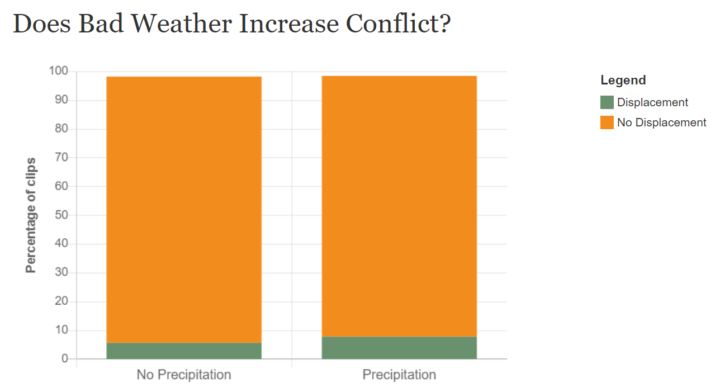Does Bad Weather Increase Conflict?
September 23, 2019
If you helped us collected data on Zooniverse, you may have wondered, “Why are we answering a question about weather?” That’s a great question and this week we’ll explore some of the data that will help explain why we did that.

Click here to see the interactive version of this graph.
When researchers measure behaviour in the wild, they typically record weather information because it can influence what bird is doing. Just like your decision to go out for a picnic may be influenced by an approaching thunderstorm, a bird’s decision on where to forage and their subsequent behavior can be affected by the weather.
When it is raining or snowing (precipitating), this may influence what the birds are doing at the feeder. We are primarily interested in how the number of birds and species influences displacements (when one bird attempts to take the perch or resource of another), but because weather may also influence birds’ behavior we need to measure it and determine if it is.
In the data visualization above, the orange bars show the percentage of clips with no displacements while the green bars show the percentage of clips with at least one displacement. Along the horizontal axis, there are two columns: no precipitation and precipitation. It is tricky to tell when all of the data is toggled “on,” but if you visit the interactive version of this chart you will see that there is a higher percentage of clips with displacements when there is precipitation compared to when there is no precipitation. This suggests that weather could be influencing the birds such that they interact more with each other while at the feeder when it is raining or snowing.
Why might that be so?
Share your thoughts below and then play with an interactive version of this chart and others that dig even deeper here.